
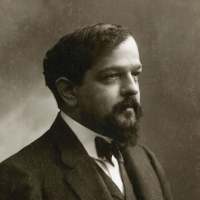
Claude Debussy
Trois Poèmes de Mallarmé
Duration: 9'
Bearbeitet von: Klaus Simon
Instrumentation details:
1st flute
2nd flute (+picc, alto fl)
1st clarinet in A (+cl(Bb))
2nd clarinet in A (+cl(Bb), bass cl(Bb))
harp
1st violin
2nd violin
viola
violoncello
Trois Poèmes de Mallarmé
Translation, reprints and more
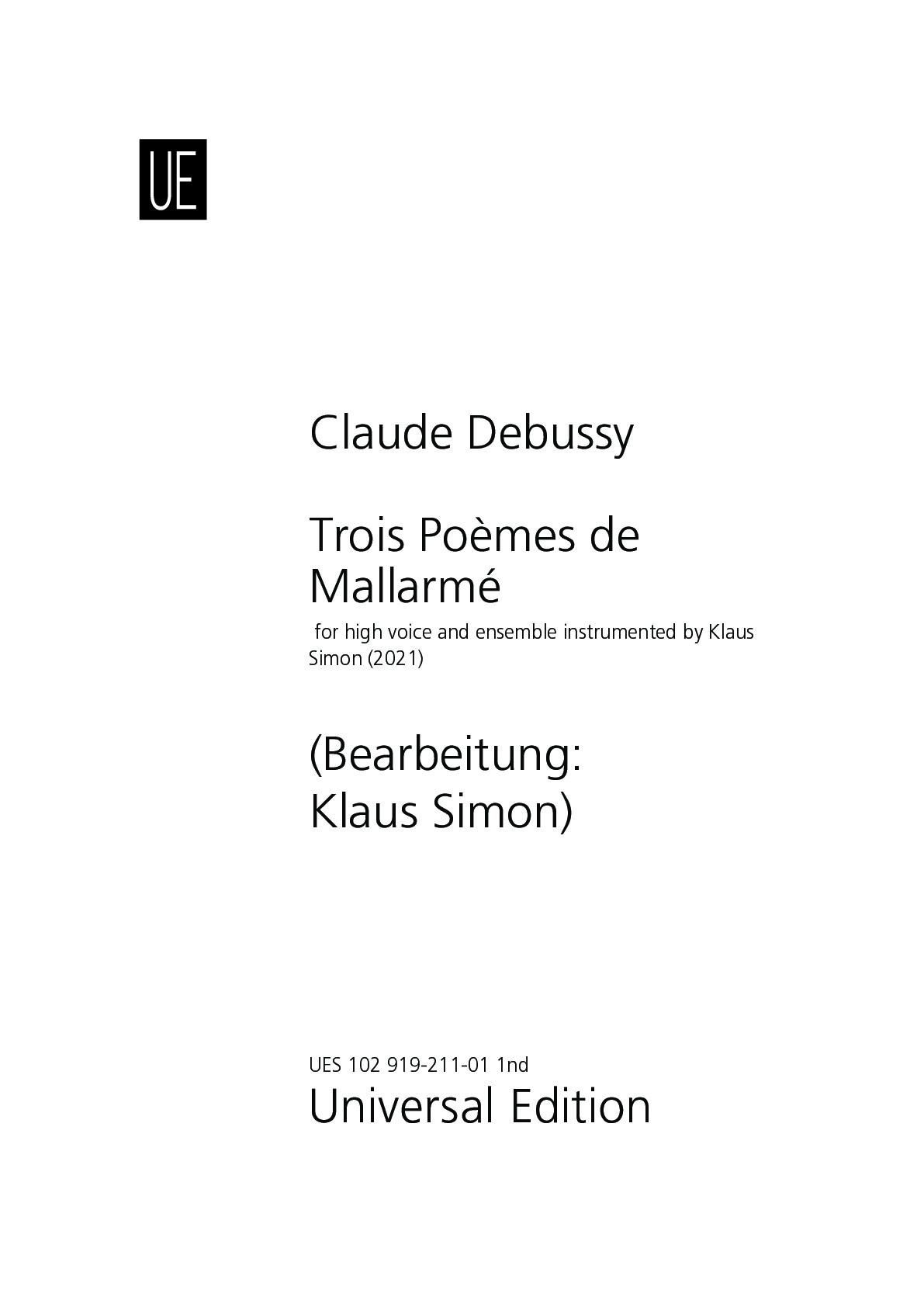
Claude Debussy
1. Flöte (Trois Poèmes de Mallarmé)Type: Stimme
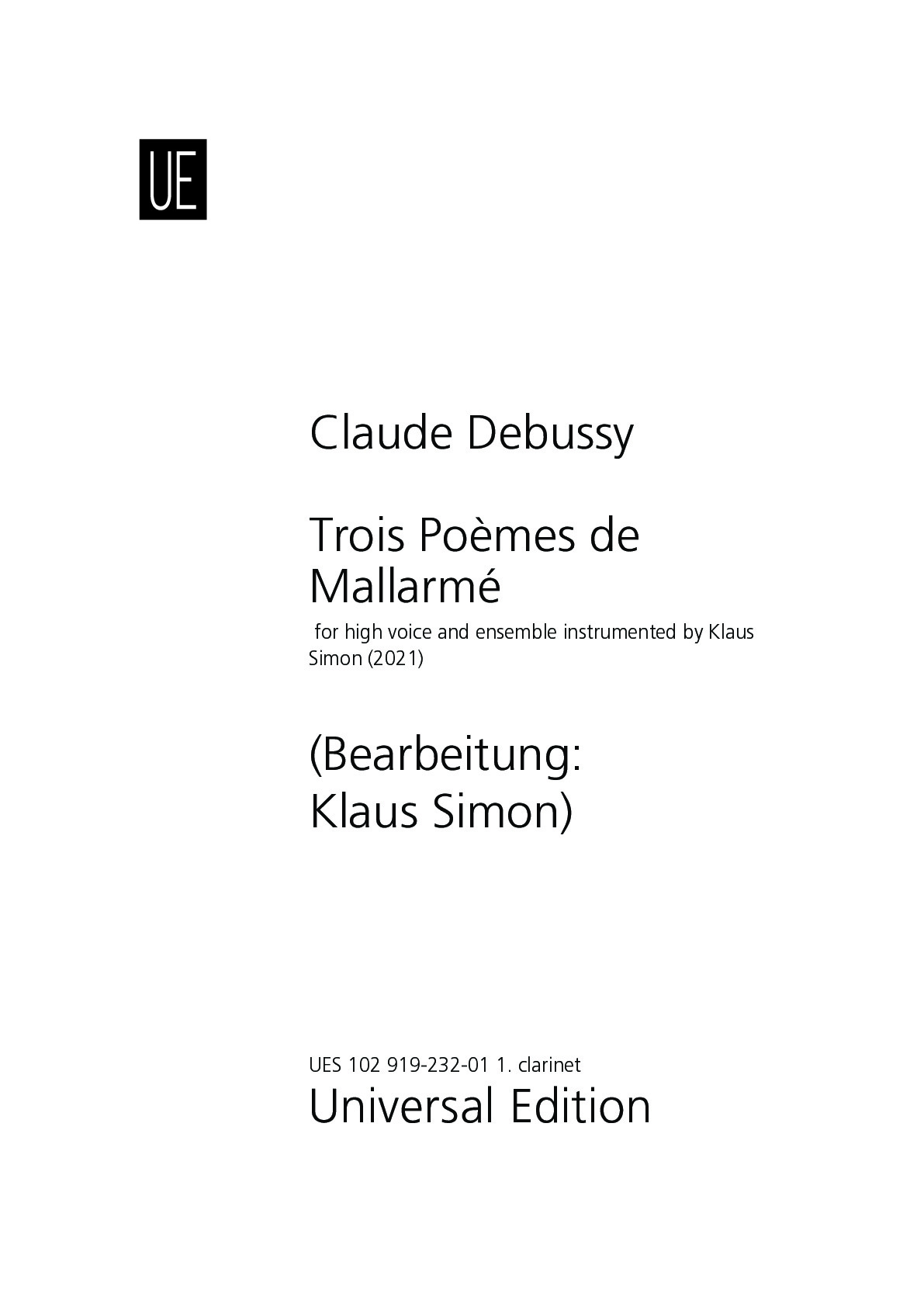
Claude Debussy
1. Klarinette in A (Trois Poèmes de Mallarmé)Type: Stimme
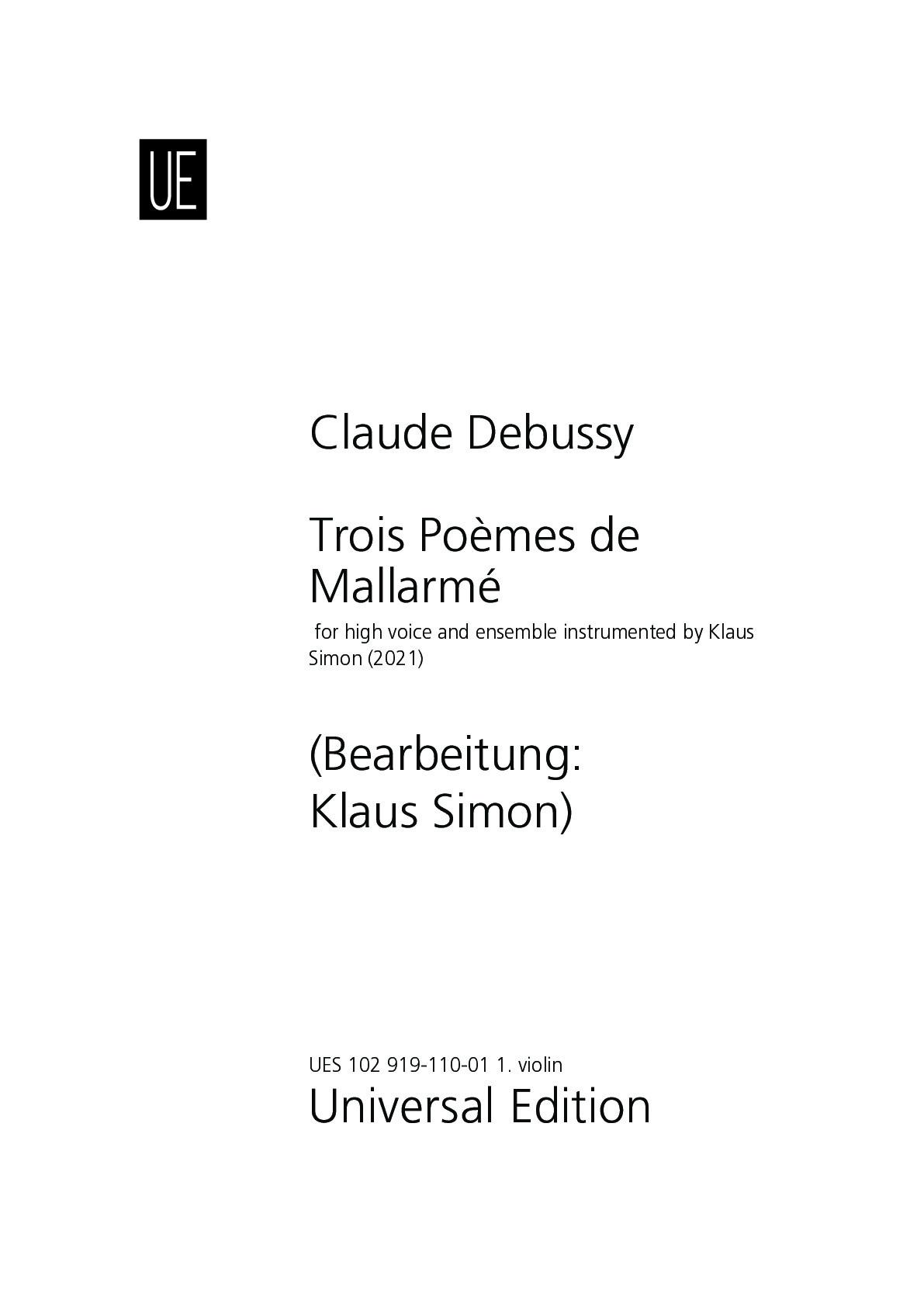
Claude Debussy
1. Violine (Trois Poèmes de Mallarmé)Type: Stimme
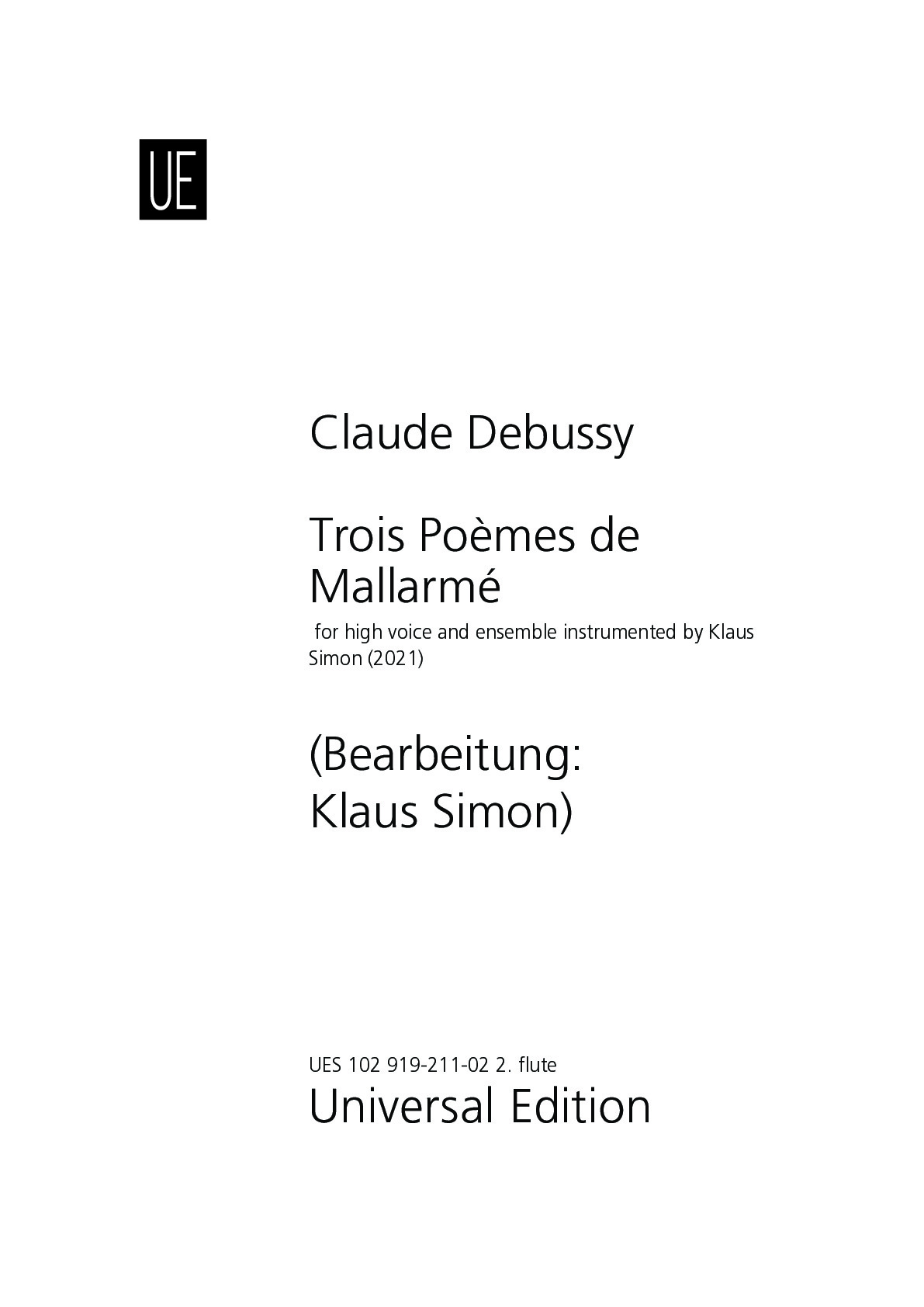
Claude Debussy
2. Flöte (Trois Poèmes de Mallarmé)Type: Stimme
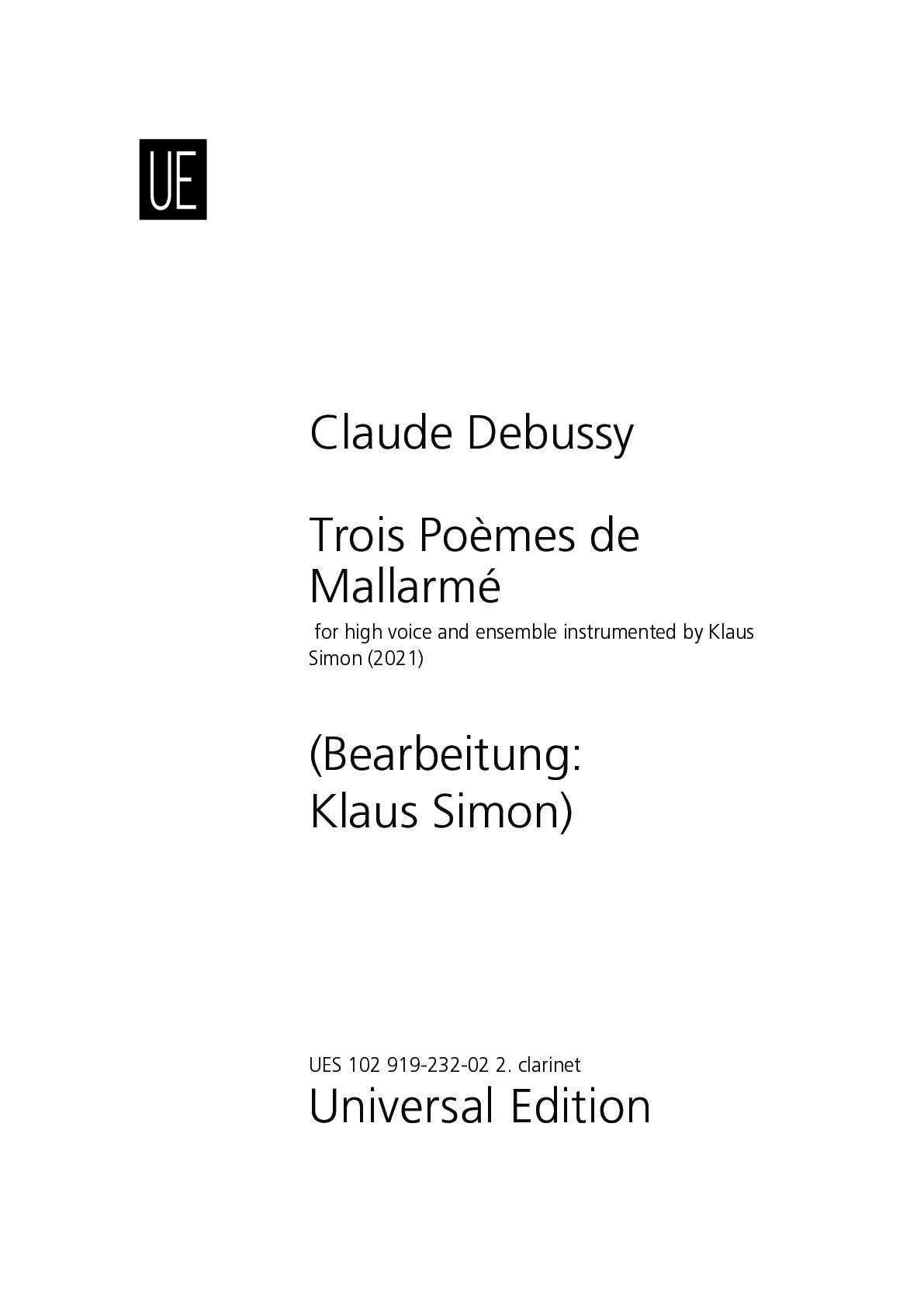
Claude Debussy
2. Klarinette in A (Trois Poèmes de Mallarmé)Type: Stimme

Claude Debussy
2. Violine (Trois Poèmes de Mallarmé)Type: Stimme
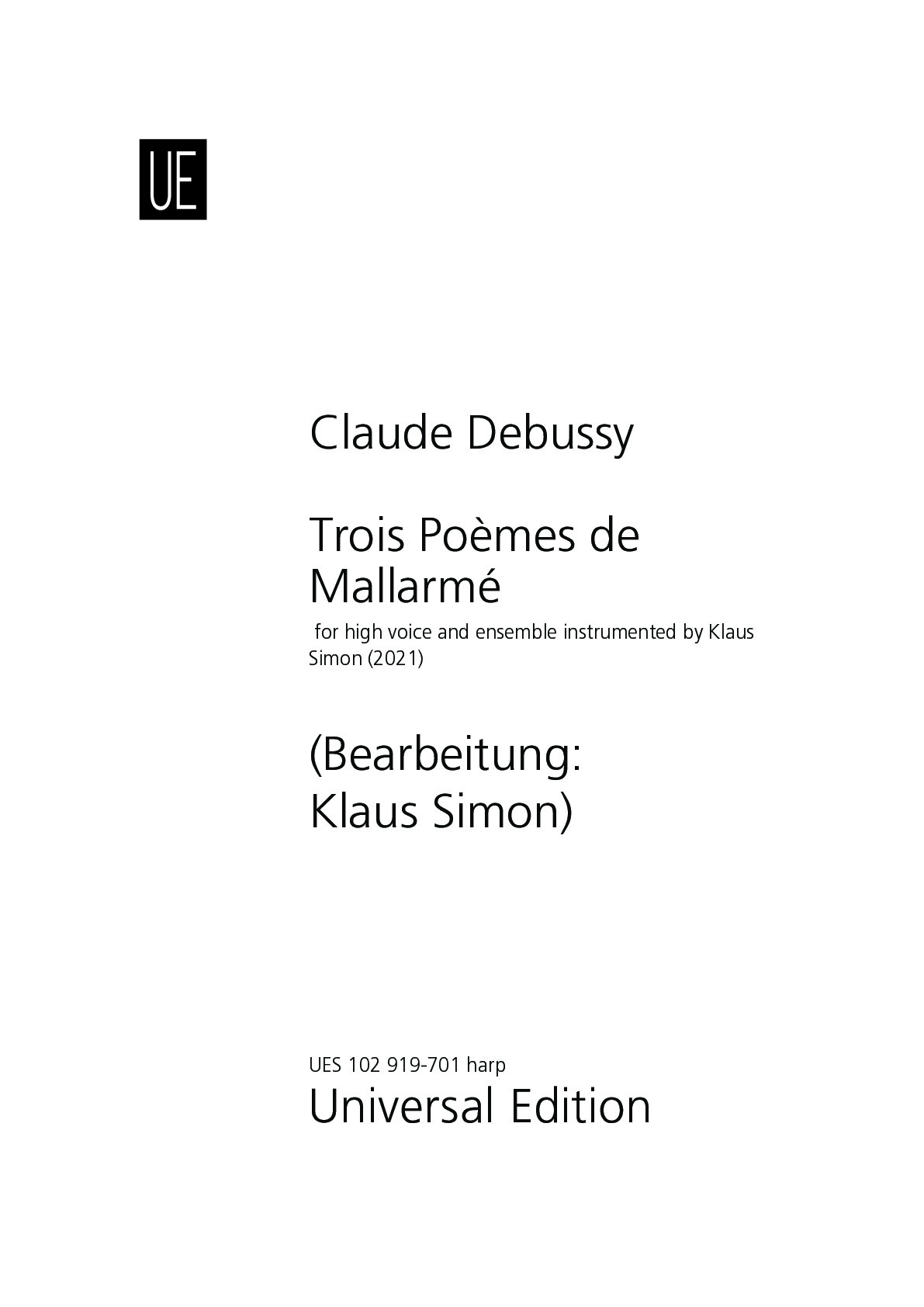
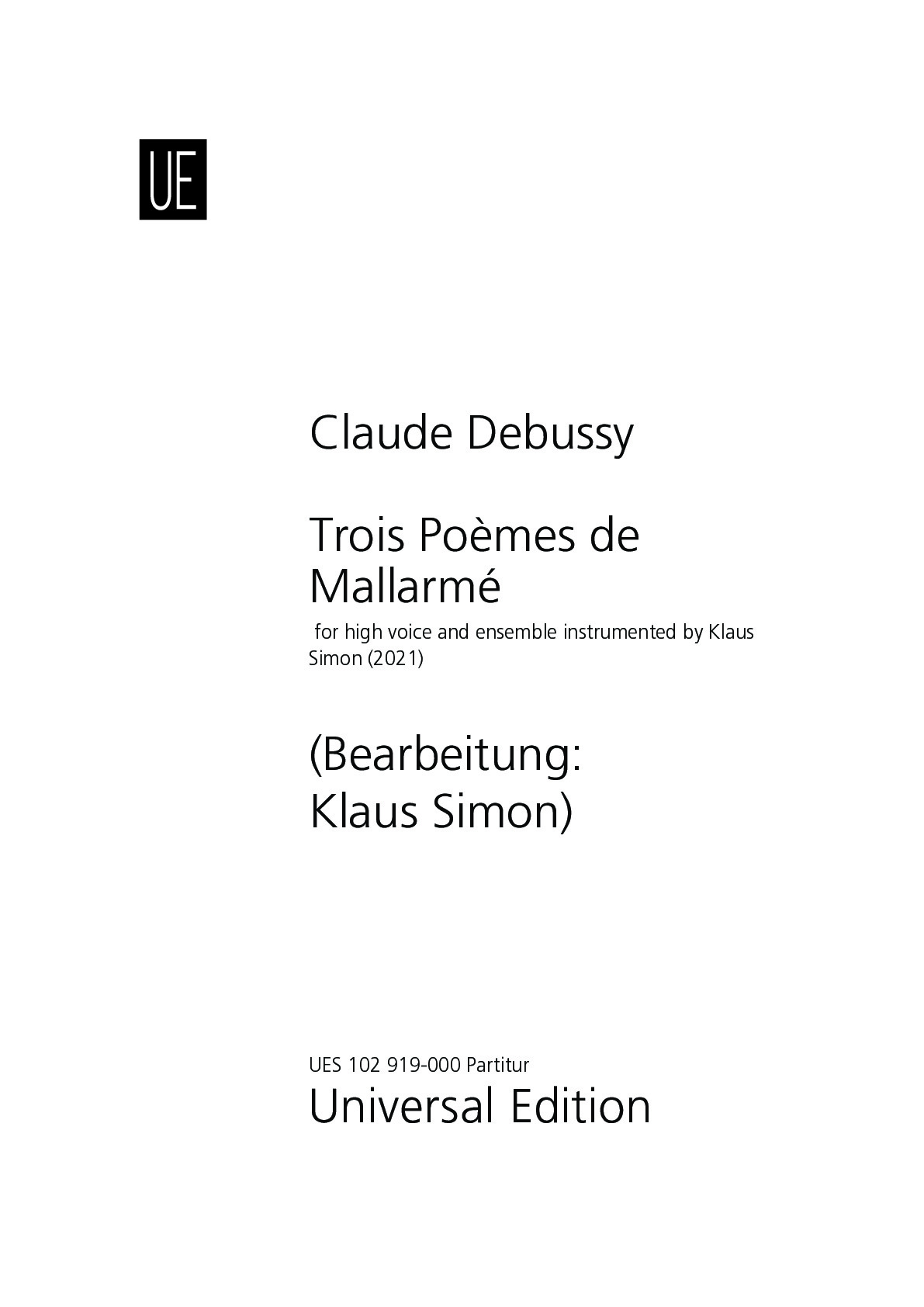
Claude Debussy
Trois Poèmes de MallarméOrchestration: für hohe Stimme und Kammerensembe instrumentiert von Klaus Simon (2021)
Type: Dirigierpartitur
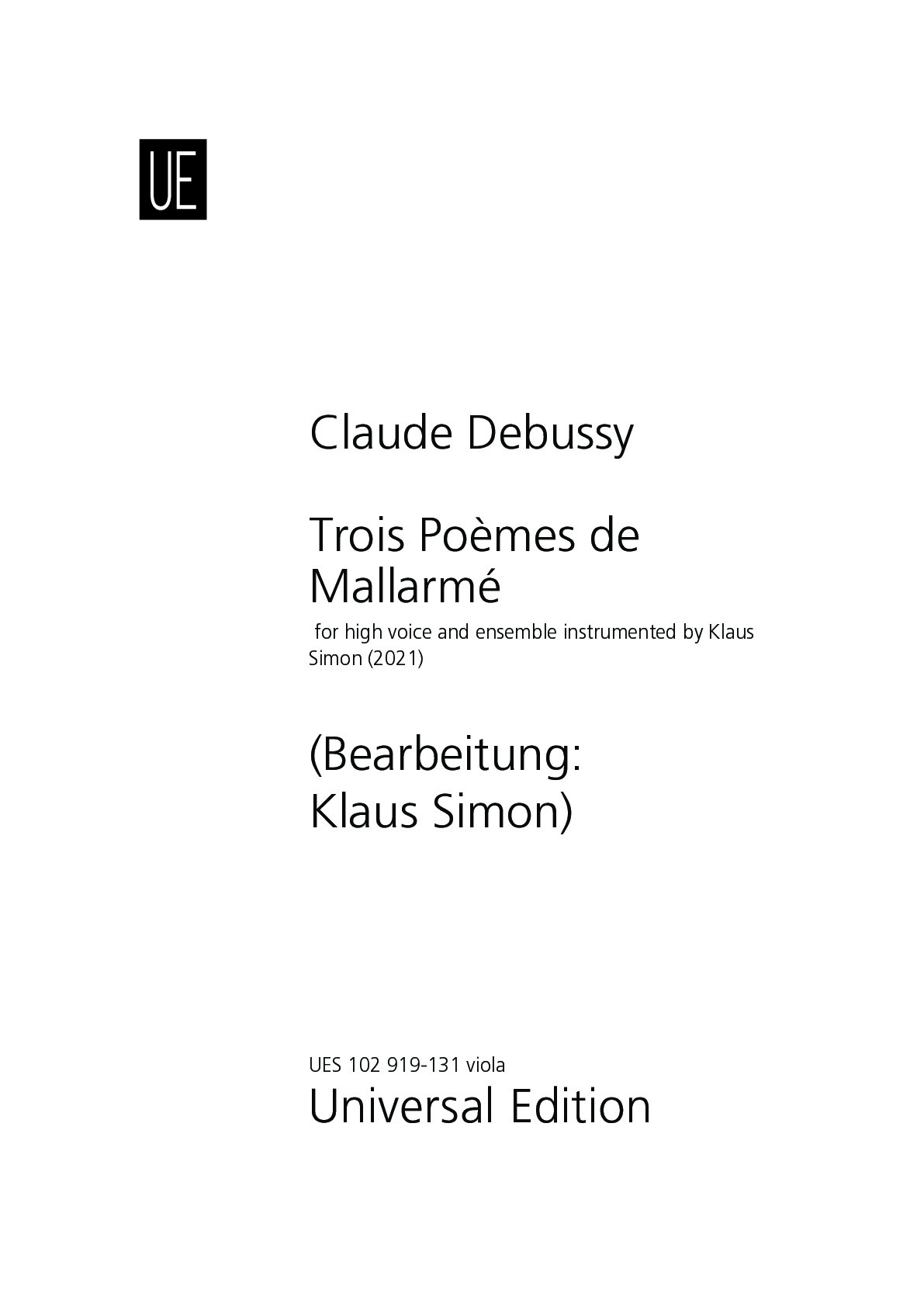
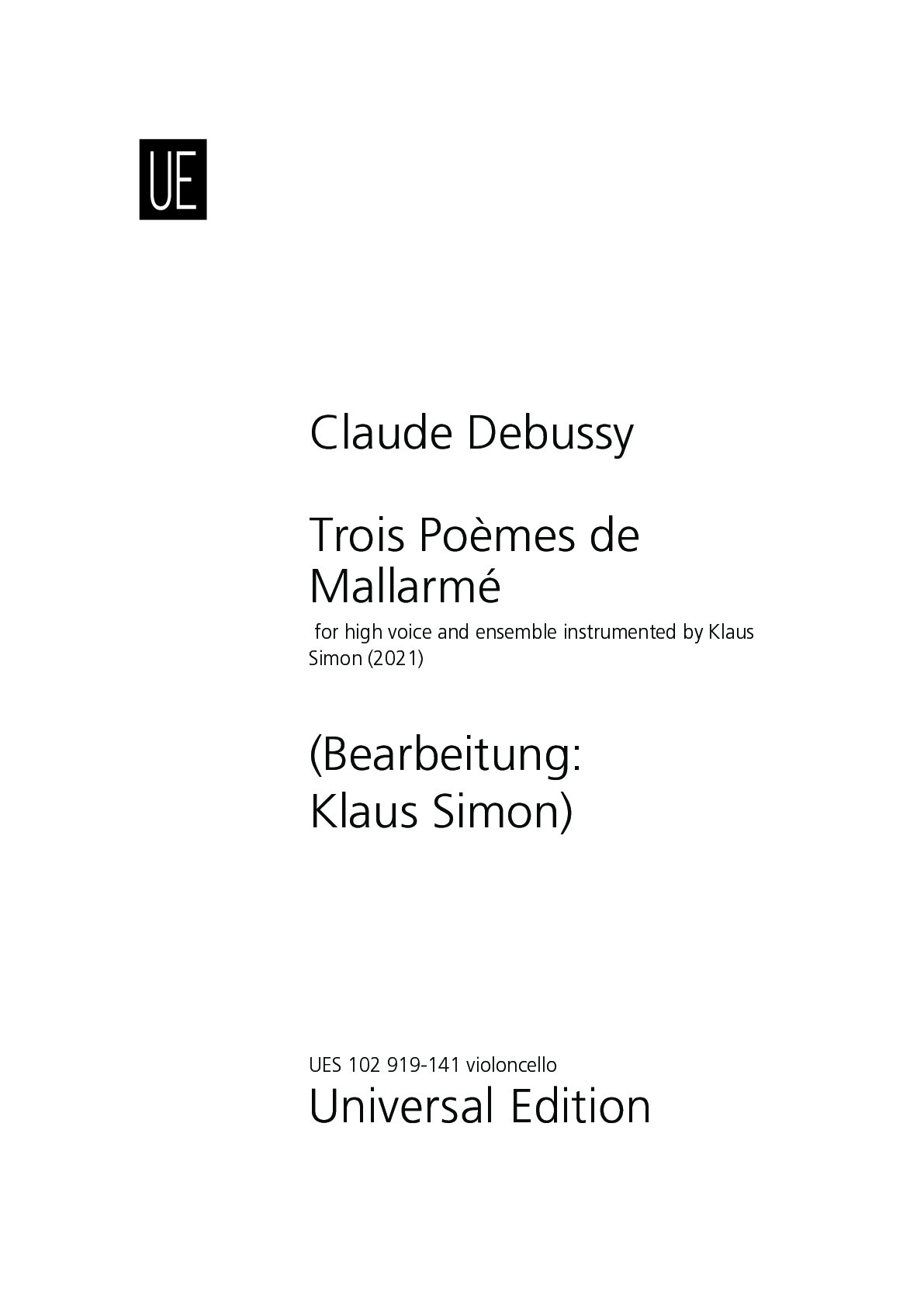
Claude Debussy
Violoncello (Trois Poèmes de Mallarmé)Type: Stimme
Sample pages
Video
Work introduction
Claude Debussy: Trois Poèmes de Mallarmé (1913) for high voice and chamber ensemble orchestrated by Klaus Simon (2021)
Claude Debussy's song cycle Trois Poèmes de Mallarmé was composed in 1913, as was Maurice Ravel's work of the same name. The selection of the first two song texts (Soupir and Placet futile) of their respective three-part cycle also happens to be identical. Was there an unconscious spiritual correspondence in the air? The simultaneity of two such important song settings on texts by the symbolist poet Stéphane Mallarmé (1842-1898) is an unusual stroke of luck in music history.
While Ravel chose a chamber ensemble of two flutes (the second also piccolo), two clarinets (the second also bass clarinet), piano and string quartet for his work, Debussy left it at a piano accompaniment in his last song oeuvre.
This instrumentation for almost the same instrumentation as Ravel's setting (I chose the harp instead of the piano) was created in 2021 for a concert program of the Holst-Sinfonietta in January 2022 under the motto "Paris 1913", in which exclusively works from that year were performed that were either composed or premiered in Paris. This included Igor Stravinsky's Trois poésies de la lyrique japonaise and Maurice Delage's Quatre poèmes Hindous, which were orchestrated for almost the same instrumentation. In addition to my instrumentation of these Debussy songs, I have also published Quatre Miniatures de 1913 on small piano pieces (Maurice Ravel: Prélude en la mineur https://www.universaledition.com/maurice-ravel-581/works/prelude-en-la-mineur-33561, À la manière de Borodine https://www.universaledition.com/maurice-ravel-581/works/a-la-maniere-de-borodine-valse-33563, À la manière de Chabrier https://www.universaledition.com/maurice-ravel-581/works/a-la-maniere-de-emmanuel-chabrier-33565 and Albert Roussel: Petit Canon Perpétuel https://www.universaledition.com/klaus-simon-3973/works/petit-canon-perpetuel-33577) for this scoring at the same time. The combination of this instrumentation of Claude Debussy's song cycle Trois Poèmes de Mallarmé with the previously mentioned pieces has proved very successful and is also naturally very suitable in a concert program.
May Debussy's last songs find their way into many concert halls in this new guise.
Denzlingen, July 2022
Klaus Simon
Performers of the world premiere on 25 January 2022 in the Ludwigskirche in Freiburg/D
Britta Stallmeister, soprano
Holst-Sinfonietta:
Julia Stocker - 1st flute; Claire Garde - 2nd flute, piccolo and alto flute.
Lorenzo Salvá Peralta - 1st clarinet; Nicole Krüger - 2nd clarinet and bass clarinet
Julia Weissbarth - harp
Sylvia Oelkrug - 1st violin; Cornelius Bauer - 2nd violin
Filomena Felley viola; Philipp Schiemenz - violoncello
Klaus Simon - Musical Direction
What is necessary to perform this work?
High Voice
1st Flute
2nd Flute (also Piccolo and Alto Flute)
1st Clarinet in A (also Clarinet in Bb)
2nd Clarinet in A (also Clarinet in Bb and Bass Clarinet in Bb)
Harp
1st Violin
2nd Violin
Viola
Violoncello
